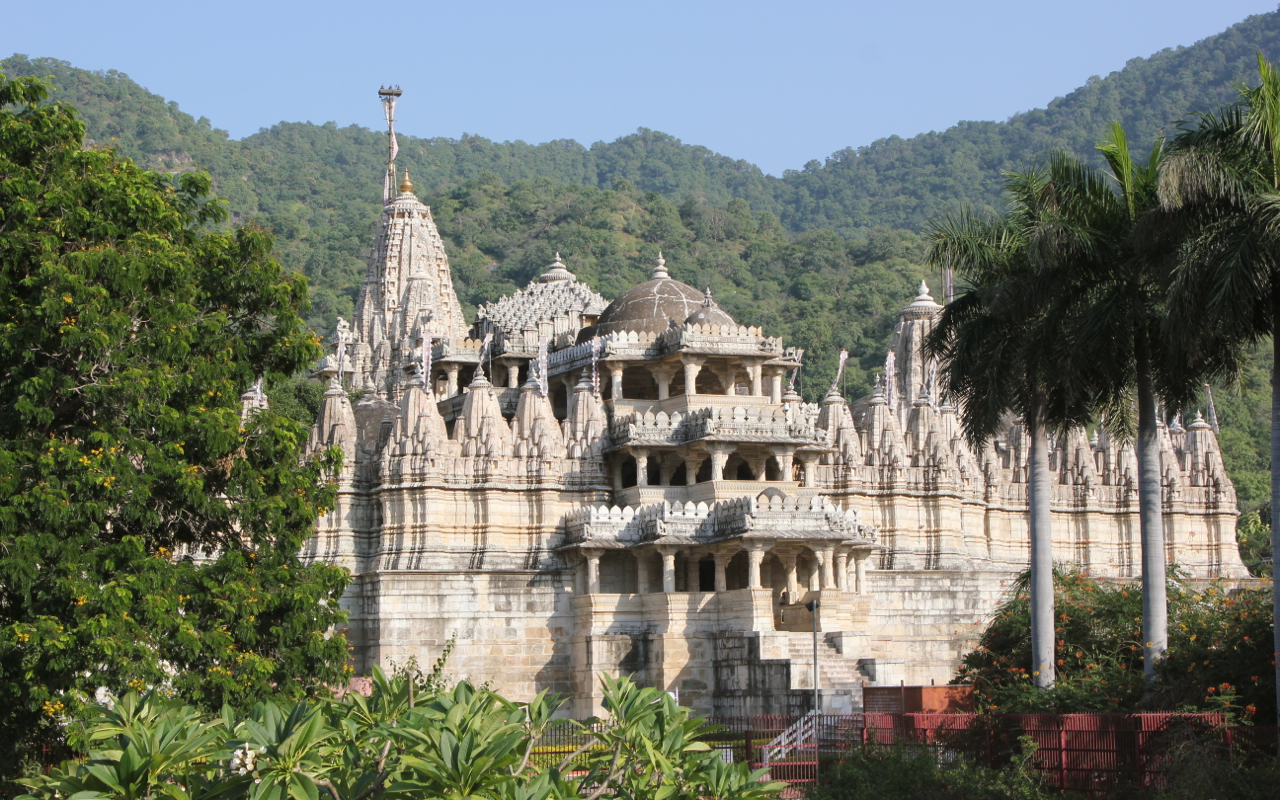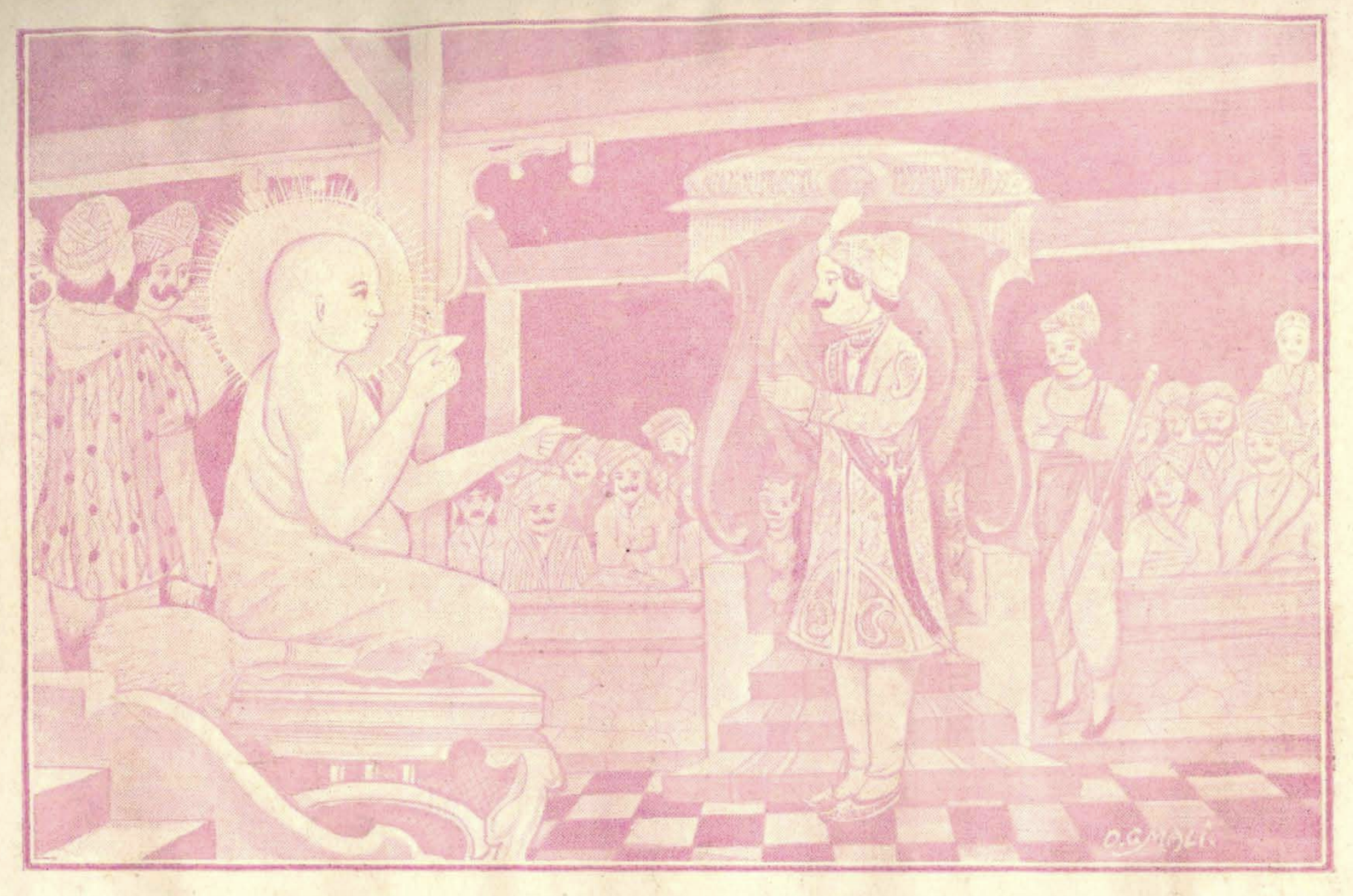|
Ambikā (Jainism)
In Jainism, Ambika (, "Mother") or Ambika Devi ( "the Goddess-Mother") is the "dedicated attendant deity" or "protector goddess" of the 22nd Tirthankara, Neminatha. She is also known as ''Ambai'', ''Amba'', ''Kushmandini'' and ''Amra Kushmandini''. She is often shown with one or more children and often under a tree. She is frequently represented as a pair (Yaksha Sarvanubhuti on the right and Kushmandini on the left) with a small Tirthankar image on the top. The name ''ambika'' literally means mother, hence she is Mother Goddess. The name is also a common epithet of Hindu Goddess Parvati. Etymology The name Ambika is a Sanskrit word, that translates to mother. Legend According to Jain texts, Ambika is said to have been an ordinary woman named Agnila who became a Goddess. She lived in the city of Girinagar with her husband, ''Soma'' and her two children, ''Siddha'' and ''Buddha'' as per the Śvetāmbara tradition, or with her husband ''Somasarman'' and her two ... [...More Info...] [...Related Items...] OR: [Wikipedia] [Google] [Baidu] |
Ellora Caves
The Ellora Caves are a UNESCO World Heritage Site in Aurangabad, India. It is one of the largest rock-cut cave complexes in the world, with artwork dating from the period 600–1000 AD, including Hindu, Buddhist, and Jain caves., Quote: "These 34 monasteries and temples, extending over more than 2 km, were dug side by side in the wall of a high basalt cliff, not far from Aurangabad, in Maharashtra. Ellora, with its uninterrupted sequence of monuments dating from AD 600 to 1000, brings the civilization of ancient India to life. Not only is the Ellora complex a unique artistic creation and a technological exploit but, with its sanctuaries devoted to Hinduism, it illustrates the spirit of tolerance that was characteristic of ancient India." The complex is a leading example of Indian rock-cut architecture, and several are not strictly "caves" in that they have no roof. Cave 16 features the largest single monolithic rock excavation in the world, the Kailash temple, a chariot-shap ... [...More Info...] [...Related Items...] OR: [Wikipedia] [Google] [Baidu] |
Chalukyas
The Chalukya dynasty () was a Classical Indian dynasty that ruled large parts of southern and central India between the 6th and the 12th centuries. During this period, they ruled as three related yet individual dynasties. The earliest dynasty, known as the "Badami Chalukyas", ruled from Vatapi (modern Badami) from the middle of the 6th century. The Badami Chalukyas began to assert their independence at the decline of the Kadamba kingdom of Banavasi and rapidly rose to prominence during the reign of Pulakeshin II. After the death of Pulakeshin II, the Eastern Chalukyas became an independent kingdom in the eastern Deccan. They ruled from Vengi until about the 11th century. In the western Deccan, the rise of the Rashtrakutas in the middle of the 8th century eclipsed the Chalukyas of Badami before being revived by their descendants, the Western Chalukyas, in the late 10th century. These Western Chalukyas ruled from Kalyani (modern Basavakalyan) until the end of ... [...More Info...] [...Related Items...] OR: [Wikipedia] [Google] [Baidu] |
Shravanabelagola
Shravanabelagola (pronunciation: ) is a town located near Channarayapatna of Hassan district in the Indian state of Karnataka and is from Bengaluru. The Gommateshwara Bahubali statue at Shravanabelagola is one of the most important tirthas (pilgrimage destinations) in Jainism, one that reached a peak in architectural and sculptural activity under the patronage of Western Ganga dynasty of Talakad. Chandragupta Maurya is said to have died on the hill of Chandragiri, which is located in Shravanabelagola, in 298 BCE after he became a Jain monk and assumed an ascetic life style. Gommateshwara statue, Akkana Basadi, Chandragupta basadi, Chamundaraya Basadi, Parshvanath Basadi and inscriptions of Shravanabelagola group of monuments are listed as Adarsh Smarak Monument by Archaeological Survey of India. Location Shravanabelagola is located at to the south-east of Channarayapatna in the Channarayapatna taluk of Hassan district of Karnataka. It is at a distance of south- ... [...More Info...] [...Related Items...] OR: [Wikipedia] [Google] [Baidu] |
Mahamastakabhisheka
The ''Māhāmastakābhiṣeka'' ("Grand Consecration") refers to the ''abhiṣeka'' (anointment) of the Jain idols when held on a large scale. The most famous of such consecrations is the anointment of the Bahubali Gommateshwara statue located at Shravanabelagola in Karnataka, India. It is an important Jain festival held once every 12 years. It is an integral part of the ancient and composite Jain tradition. The festival is held in veneration of a high monolithic statue of the Siddha Bahubali. The anointing last took place in February 2018, and the next ceremony will take place in 2030. The ceremony in 2018 is said to be the 88th in the series that commenced in the year 981 AD and was the second Mahamastakabhisheka of the 21st century. The ceremony is expected to be graced by numerous Jain ascetics. The February 2018 event was held under the leadership of Charukeerthi Bhattaraka Swamiji of Shravanabelagola from 17 to 25 February 2018. Anointment of the Gommateshwara B ... [...More Info...] [...Related Items...] OR: [Wikipedia] [Google] [Baidu] |
Chavundaraya
''Cāmuṇḍarāya'' or Chavundaraya (Kannada ''Cāmuṇḍarāya, Cāvuṇḍarāya'', 940–989) was an Indian people, Indian Jain ruler. He served in the court of the Western Ganga dynasty of Talakad (in modern Karnataka, India). A person of many talents, in 981 he commissioned the construction of the monolithic statue of Bahubali, the Gommateshwara statue, Gomateshwara, at Shravanabelagola, an important place of pilgrimage for Jainism. He was a devotee of the Jain Acharya Nemichandra and Ajitasena Bhattaraka and was an influential person during the reigns of Marasimha II Satyavakya, (963–975). Rachamalla IV Satyavakya, (975–986) and Rachamalla V (Rakkasaganga), (986–999). A courageous commander with the title ''Samara Parashurama, Paraśurāma'' (''lit'', "Battle-Rama wielding an ax"), he found time to pursue his literary interests as well and became a renowned writer in Kannada and Sanskrit.Kamath (2001), p45Sastri (1955), pp356-357 He wrote an important and exist ... [...More Info...] [...Related Items...] OR: [Wikipedia] [Google] [Baidu] |
Gommateshwara Statue
The Gommateshwara statue is a high monolithic statue on Vindhyagiri, also known as ''Indra-giri'' in the town of Shravanbelagola in the Indian state of Karnataka. Carved of a single block of granite, it is one of the tallest monolithic statues in the ancient world. The Gommateshwara statue is dedicated to the Jain figure Bahubali and symbolises the Jain precepts of peace, non-violence, sacrifice of worldly affairs, and simple living. It was built around 983 CE during the Western Ganga dynasty and is one of the largest free-standing statues in the world. It was regarded the tallest Jain statue until 2016. The construction of the statue was commissioned by the Ganga dynasty minister and commander Chavundaraya. Neighbouring areas have Jain temples known as ''basadis'' and several images of the Tirthankaras. Vindyagiri Hill is one of the two hills in Shravanabelagola. The other is Chandragiri, which is also a seat of several ancient Jain centres, much older than Gommateshwara ... [...More Info...] [...Related Items...] OR: [Wikipedia] [Google] [Baidu] |
Porwal
Poravāla, correctly called Poravāḍa, is a Kshatriya community that originated in southern Rajasthan, India. They are mainly of Jain or Hindu faith. The name Poravāla was applied on the basis of the names of other Bania communities ( Osavāla, Agaravāla, Khaṇḍelavāla, etc.). The name Poravāḍa is derived from Prāgavaṭa. The caste is divided into 24 gotras. They are also divided into three sections (from highest to lowest status): Visā, Dasā and Pañcā Poravāḍas. According to tradition the Visā and Dasā divisions arose in the 13th century. The brothers Vastupāla and Tejapāla were the sons of Poravāḍa father and Śrīmāli mother. The Poravādas who chose to eat with the brothers became Dasā, and those who refused became Visā. The Visā and Dasā interdine but do not intermarry. The Visās tend to be Jain while Dasā's tend to be Vaishnav. Formerly interreligious marriages occurred between Jains and Vaishnavs of the same sub-caste. They originate ... [...More Info...] [...Related Items...] OR: [Wikipedia] [Google] [Baidu] |
Jain Community
The Jains in India are the last direct representatives of the ancient Shramana tradition. People who practice Jainism, an ancient religion of the Indian subcontinent, are collectively referred to as Jains. Sangha Jainism has a fourfold order of ''muni'' (male monastics), '' aryika'' (female monastics), ''Śrāvaka'' (layman) and ''sravika'' (laywoman). This order is known as a ''sangha''.. Many Jains are in general caste. Cultural influence The Jain have the highest literacy rate in India, 94.1.% compared with the national average of 65.38%. They have the highest female literacy rate, 90.6.% compared with the national average of 54.16%. As per national survey NFHS-4 conducted in 2018 Jains were declared wealthiest of any community with 70% of their population living in top quintiles of wealth. The sex ratio in the 0-6 age group is the second lowest for Jain (870 females per 1,000 males). Communities Jains are found in almost every part of India. There are about 100 diffe ... [...More Info...] [...Related Items...] OR: [Wikipedia] [Google] [Baidu] |
Porwad
Poravāla, correctly called Poravāḍa, is a Kshatriya community that originated in southern Rajasthan, India. They are mainly of Jain or Hindu faith. The name Poravāla was applied on the basis of the names of other Bania communities ( Osavāla, Agaravāla, Khaṇḍelavāla, etc.). The name Poravāḍa is derived from Prāgavaṭa. The caste is divided into 24 gotras. They are also divided into three sections (from highest to lowest status): Visā, Dasā and Pañcā Poravāḍas. According to tradition the Visā and Dasā divisions arose in the 13th century. The brothers Vastupāla and Tejapāla were the sons of Poravāḍa father and Śrīmāli mother. The Poravādas who chose to eat with the brothers became Dasā, and those who refused became Visā. The Visā and Dasā interdine but do not intermarry. The Visās tend to be Jain while Dasā's tend to be Vaishnav. Formerly interreligious marriages occurred between Jains and Vaishnavs of the same sub-caste. They originate ... [...More Info...] [...Related Items...] OR: [Wikipedia] [Google] [Baidu] |
Kuladevi
A ''kuladevata'' (), also known as a ''kuladaivaṃ'' (), is an ancestral tutelary deity in Hinduism and Jainism. Such a deity is often the object of one's devotion (''bhakti''), and is coaxed to watch over one's clan (''kula''), gotra, family, and children from misfortune. This is distinct from an '' ishta-devata'' (personal tutelar) and a grāmadevatā (village deities). A male deity is called a ''kuladeva'' and female deity ''kuladevi'' (sometimes spelled ''kuldev'' and ''kuldevi'' respectively). Etymology The word ''kuladevata'' is derived from two words: ''kula'', meaning clan, and ''devata'', meaning deity, referring to the ancestral deities that are worshipped by particular clans. Veneration Kuladaivams of the Shaiva tradition are often considered to be forms of Shiva and Parvati, while those of the Vaishnava tradition are often regarded to be forms of Vishnu and Lakshmi. Due to the veneration of holy men (''babas'') in several regions of the subcontinent, several ... [...More Info...] [...Related Items...] OR: [Wikipedia] [Google] [Baidu] |
Dilwara Temples
The Dilwara Temples or Delvada Temples are a group of Śvētāmbara Jain temples located about kilometres from the Mount Abu settlement in Sirohi District, Rajasthan's only hill station. The earliest were built by Vimal Shah , a Jain minister of Solanki king of Gurjaratra , Bhima I and additions to the temples were made by Vastupala, Jain minister of Vaghelas of Gurjaratra. They date between the 11th and 16th centuries, forming some of the most famous monuments in the style of Solanki architecture, famous for their use of a very pure white marble and intricate marble carvings. They are managed by Seth Shri Kalyanji Anandji Pedhi, Sirohi and are a pilgrimage place for Jains, and a significant general tourist attraction. The Dilwara temples are regarded as the most impressive among Jain temples in Rajasthan. Architecture The five Dilwara temples are among the most famous Jain temples. The Vimal Vasahi is much the earliest, constructed by 1031, with the Luna Vasa ... [...More Info...] [...Related Items...] OR: [Wikipedia] [Google] [Baidu] |








